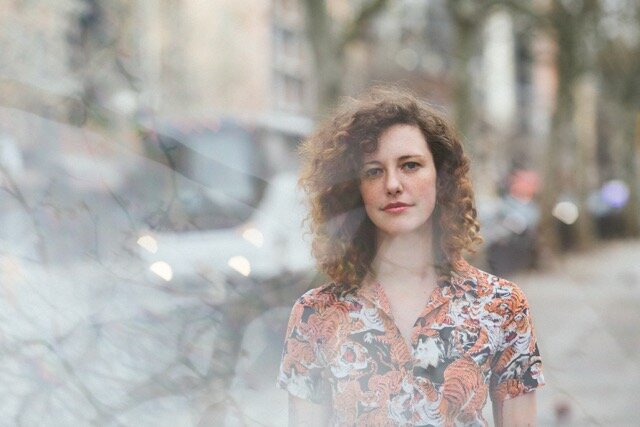Esmé Patterson Makes Progress

Patterson's latest album, "We Were Wild," makes deeply personal issues feel universal.
Esmé Patterson’s three solo projects follow a natural progression. Her first, All Princes, I (2012), is an angst-ridden album that feels urgently personal and in the moment, with songs that tell stories of infatuation, infidelity, and plain old injury. Her second, Woman To Woman (2015), is a concept album. Each song is written from the perspective of a woman who was previously the eponymous character in a famous song (“Allison,” “Loretta,” “Eleanor Rigby,” etc.), but never got tell her own side of the story.
Patterson will play Gasa Gasa this Saturday night, and she released her latest project, We Were Wild, early last month. It brings Patterson’s journey full circle in that it feels very personal, but the overall message of the album is one of universality. This theme is most clearly annunciated on “No River,” in which each verse ends with the simple refrain “I’m human, I’m human.” At its best, the album is a musical representation of the connective spiritual tissue that unites all humankind.
From an outsider’s perspective, the path in her albums from adolescent self-interest to a more righteous, altruistic feminism to an almost Zen-like humanism appears obvious. Patterson acknowledges it to a point. “I feel like that’s kind of a part of getting older that you just pull out of your own steer a little bit more and start to see that the things you’re thinking and feeling are pretty much the things that everybody is thinking and feeling,” she says.
Patterson’s musical journey is not as straightforward as it appears. For starters, she doesn’t view her music as feminist and is tired of hearing people call it that. “While I identify as a feminist, I don’t feel like writing about my life as a woman necessarily makes my music feminist music, because a man writing music about his life doesn’t make it pro-masculinity music. It’s just music. I don’t think I’ve made a real transition,” she says. “I only wrote one album from the perspective of women in famous songs, but I’ve written hundreds of songs in my life and they’re all mostly about being human.”
Even with Woman to Woman, Patterson claims she didn’t set out to make a feminist record. “It definitely isn’t a male versus female record at all," she says. "I think a lot of people got that wrong and are quick to jump to the angry female archetype. The idea was just a thought experiment putting myself in the perspective of these female characters, which were not all responses to men." “Never Chase a Man,” for instance, is her response to Dolly Parton’s “Jolene.”
“It was just an exploration of art as discussion, and continuing a dialogue of really seeing these characters from their objectification.”
The album still holds up outside its context, which is exactly what Patterson intended. She went out of her way to conceal the album’s core concept from casual listeners, excluding any mention of the “original” songs she was responding to from the album packaging. “If people wanted to dig deeper—if they came to a show—I would explain it and they would understand the deeper dimension of it,” she says. “But it was important to me that the album be able to stand on its own as a good group of songs.”
More importantly, the angst that defined Patterson’s first solo album is not simply present on We Were Wild; it’s essential to it. While “No River” is certainly one of the best tracks on the album, an entire LP of songs with that same wholesome message and Americana aesthetic would come off as campy in 2016. Instead, it’s juxtaposed against tracks like “Feel Right,” which starts the album off with a healthy dose of pop punk energy, or “Alone," a sadder song that deals with the deeply personal emotion of loneliness—even in the presence of others—that is familiar to all of us.
Regardless of what has or hasn’t changed about Patterson’s work over the course of her solo career, her music has always possessed a captivating warmth and relatability. “When I write a song, I feel like I’m building a room that anyone and everyone can step into with their own life and their own experience and furnish and live in,” she says. “That is the kind of space that good art creates.”






